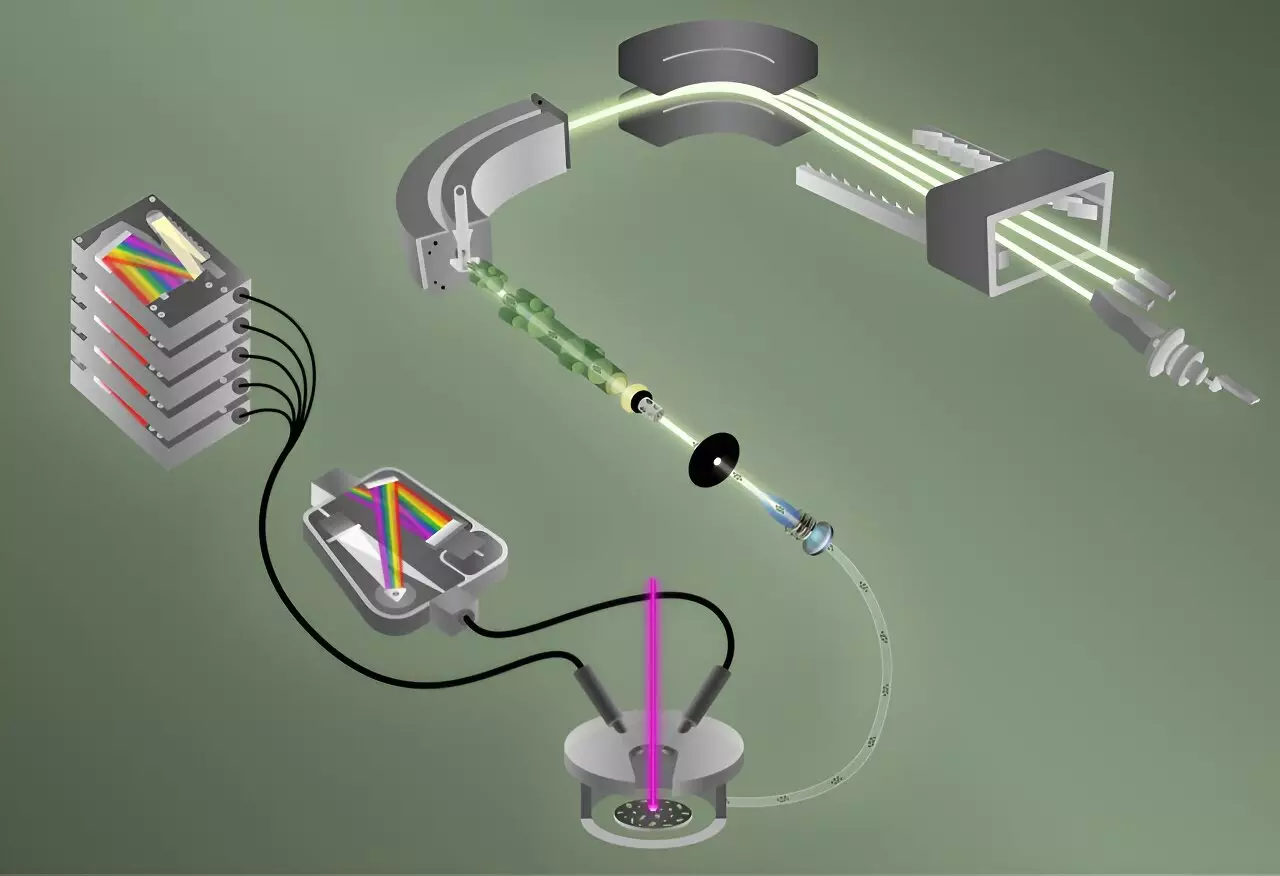The realm of analytical chemistry has undergone a significant transformation, thanks to groundbreaking techniques developed by researchers at Oak Ridge National Laboratory (ORNL). This research presents a pioneering method to simultaneously detect fluorine and various isotopes of uranium in individual particles—a feat that could pivotally influence nuclear safeguarding practices and further scientific inquiry into a myriad of fields. This article delves into the implications of this innovative approach, its technical underpinnings, and the broader potential applications.
Fluorine plays a crucial role in the conversion of uranium into forms conducive for enrichment processes. Thus, identifying both fluorine and uranium isotopes concurrently could empower the International Atomic Energy Agency (IAEA) inspectors with vital insights into the intended use of nuclear materials. The study, reported in the Journal of the American Chemical Society, emphasizes the importance of distinguishing between different isotopes and elemental compositions at unprecedented speeds. Traditional methods of analyzing isotopic ratios could take hours, if not longer. By streamlining this process, the ORNL team has introduced a new era of efficiency in nuclear material assessment.
To achieve this groundbreaking detection capability, researchers harnessed two advanced techniques: laser-induced breakdown spectroscopy (LIBS) and laser ablation multicollector inductively coupled plasma mass spectrometry (ICP-MS). LIBS is a powerful method that initiates a breakdown of the material through laser-induced evaporation, creating a plasma cloud from which light is emitted. This emitted light is then analyzed to determine elemental compositions—much like the colors produced in a fireworks display, where different elements produce distinct wavelengths of light.
The second technique, ICP-MS, involves using radio-frequency energy to heat the plasma to extreme temperatures, enabling the study of uranium isotopes with high precision. By seamlessly integrating these techniques, the researchers managed to analyze samples—each comparable in size to a red blood cell—within a mere five minutes. This leap in speed and accuracy is a crucial advancement for understanding complex chemical processes and elucidating the historical context of various materials.
While initially developed for national security applications, the practical implications of this combined methodology extend far beyond the realm of nuclear oversight. The ability to swiftly identify chemical compositions may find applications in the production of next-generation batteries, advanced nuclear reactor fuels, and environmental science endeavors. For instance, ongoing studies—like those examining fluorine concentrations in shark teeth—highlight the potential for this technology to trace environmental conditions over time.
The versatility of this technique suggests its applicability in geology, biology, and chemistry, making it a valuable tool for multidisciplinary research. By focusing on the isotopic variation and chemical composition of diverse materials, the ORNL team is positioned to unearth essential data in various scientific inquiries.
Despite these advancements, researchers face challenges, particularly with isotopes having a preference for negative charges, such as fluorine. This characteristic complicates their analysis using traditional mass spectrometry approaches. Thus, the integration of LIBS for preliminary detection followed by ICP-MS for isotopic analysis proves essential.
The research team, led by Benjamin Manard, is eager to push further into this frontier. Their aspiration to identify additional uranium compounds alongside overcoming the challenges presented by electronegative elements like chlorine speaks to their commitment to advancing scientific knowledge in this domain. An anticipated area of exploration is analyzing different types of uranium compounds quickly and accurately, harnessing this dual methodology to shed light on processes central to nuclear material management.
The ORNL’s integration of LIBS and ICP-MS offers a transformative step forward in the field of analytical chemistry. By enabling the concurrent detection of fluorine and uranium isotopes within single particles, this innovative approach not only enhances the analysis of nuclear materials but also opens new avenues for research across various scientific disciplines. As the team continues to refine and expand the application of this technology, its potential to unravel complex chemical processes and safeguard against nuclear proliferation will solidify its place as a cornerstone of modern analytical techniques.

